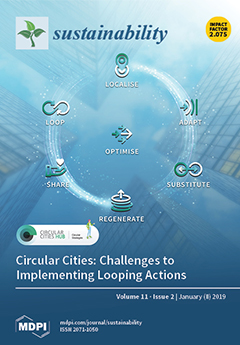Amomum tsaoko is cultivated in forests of tropical and subtropical regions of China, and the planting area is expanding gradually. However, little attention has been paid to the impact of
A. tsaoko cultivation on the soil characteristics of the regions. We analyzed the
[...] Read more.
Amomum tsaoko is cultivated in forests of tropical and subtropical regions of China, and the planting area is expanding gradually. However, little attention has been paid to the impact of
A. tsaoko cultivation on the soil characteristics of the regions. We analyzed the effects of the
A. tsaoko-forest agroforestry system (AFs) on the composition of soil microbial communities with increasing stand ages. We also compared the soil physicochemical properties, microbial biomass, and phospholipid fatty acid (PLFA) composition between native forest (NF) and AFs. The results showed that the level of total carbon, nitrogen, and organic matter dramatically dropped in AFs with increasing stand ages. pH affected other soil properties and showed close correlation to total carbon (
P = 0.0057), total nitrogen (
P = 0.0146), organic matter (
P = 0.0075), hydrolyzable nitrogen (
P = 0.0085), available phosphorus (
P < 0.0001), and available potassium (
P = 0.0031). PLFAs of bacteria (
F = 4.650,
P = 0.037), gram-positive bacteria (
F = 6.640,
P = 0.015), anaerobe (
F = 5.672,
P = 0.022), and total PLFA (
F = 4.349,
P = 0.043) were significantly affected by different treatments, with the greatest value for NF treatment, and least value for AF5. However, the microbial biomass declined during the initial 5 years of cultivation, but it reached the previous level after more than 10 years of cultivation. Our research suggests that AFs is a profitable land-use practice in the Gaoligong Mountains and that AFs showed a recovering trend of the soil nutrient condition with increasing stand ages. However, the severe loss of nitrogen in the soil of AFs requires additional nitrogen during cultivation to restore it to pre-cultivation levels.
Full article





